USCDornsife
Menu
Search

Explore USC Native and Climate Adapted Planting Sites: Blooms at Bloom
Blooms at Bloom
Blooms at Bloom is a native planting test plot located on Bloom Walk, in front of the USC Roski School of Design. Being placed on a series of steps, under the shades of large trees, and along a vibrant pathway, it is the perfect spot for reconnecting with nature!
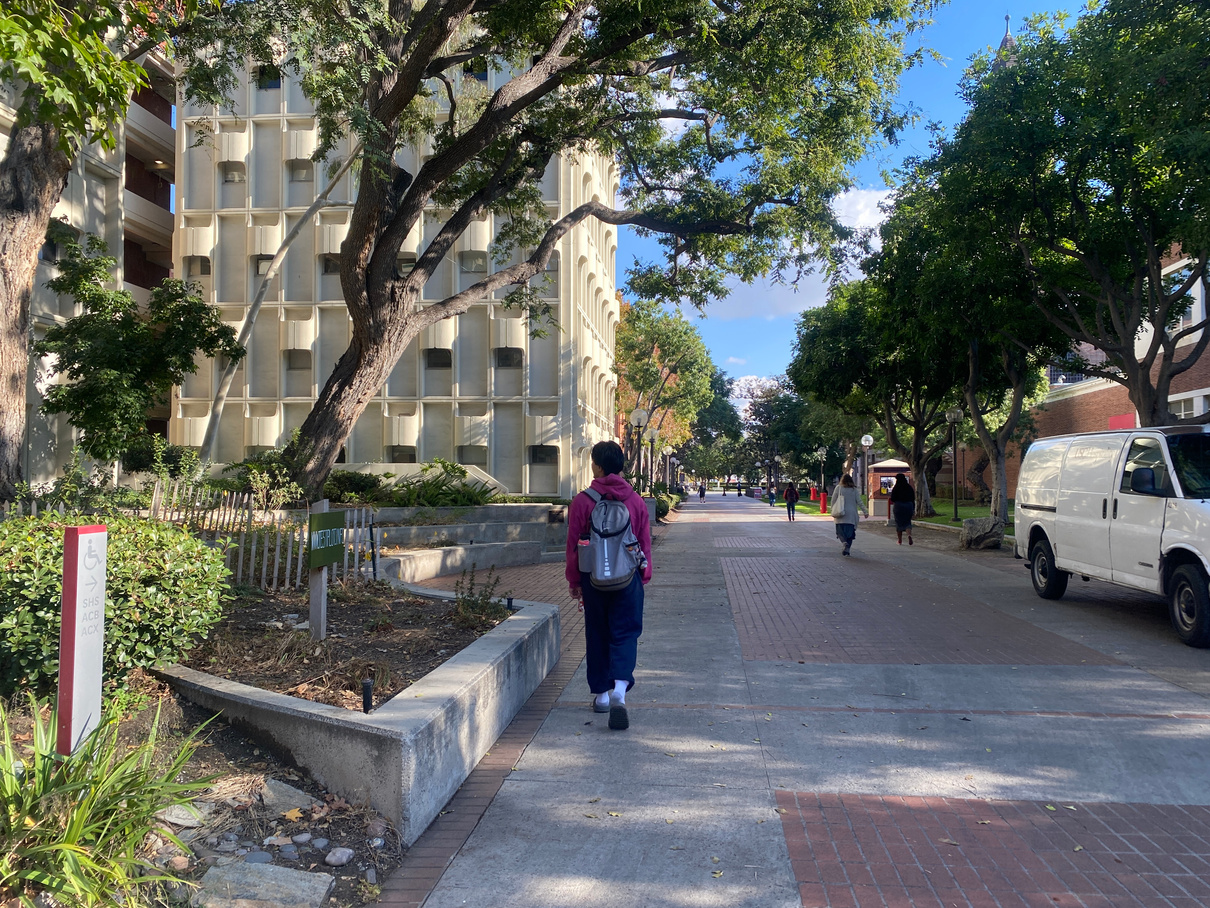
Experiencing Nature for a Good Life
Spending time in nature is good for you. Plain and simple. Studies have found that spending 120 minutes in nature is associated with an increase in happiness levels, along with self-reports of good health.
Beyond this, time in nature can improve your ability to concentrate and your mental fatigue. Time in nature is quintessential for all facets of your life, so go outside, and enjoy!
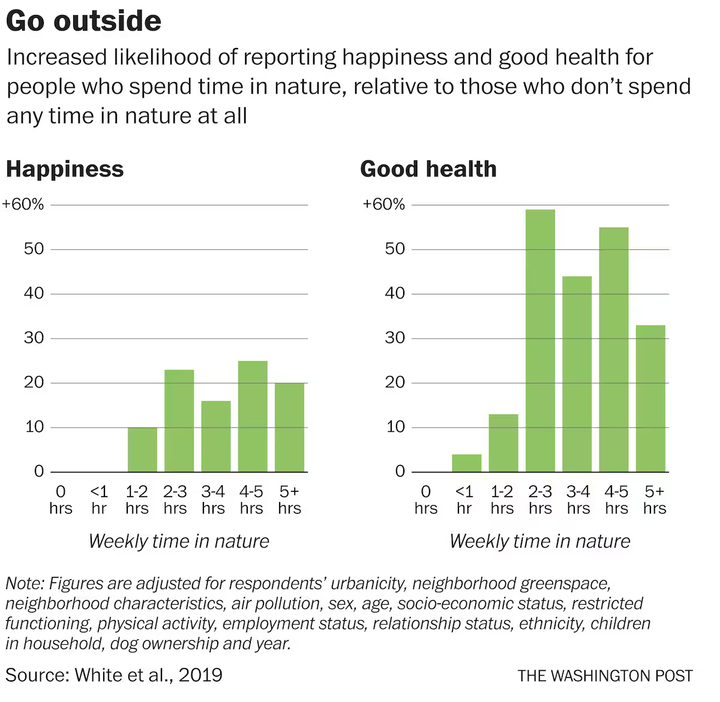

White et al., 2019
Guided Mindful Nature Tour
To fully experience the new site, consider going on a mindful Nature Walk. Practicing mindfulness and paying close attention to the nature and wildlife experience offered by Blooms at Bloom can help us restore our attention levels, reduce stress, and leave you feeling happy and fulfilled!
Think
Feel
Do
Take a seat on the Blooms at Bloom steps. Look around. What do NOTICE about the plants that may be different from the rest of USC’s plantings?
You may notice blooming green plants, or you may notice dormant ones.
Just as you have different stages of your life, so do the plants!
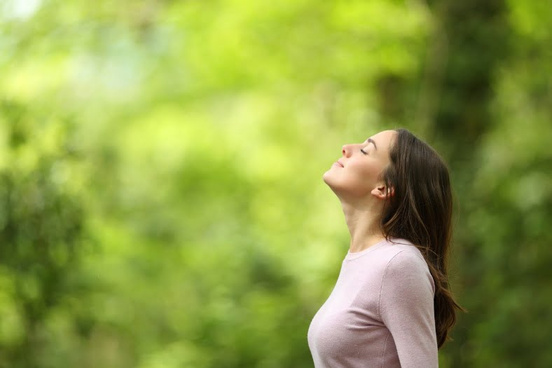
photo via ontariocaregiver.ca
Take a second to feel what is around you.
FEEL the shade of the trees cooling you during the summer or the warm light rays during the winter.
SMELL the air around you. Get closer and smell the flowers and leaves. Can you tell which plants may have been used for teas based on their scent?
LISTEN closely. Can you hear birds chirping, bees buzzing, or the quiet humming of hummingbirds?

photo via shutterstock
After observing, engaging, and connecting with Blooms at Bloom can you think of other activities you can do to enhance your experience?
TAKE PHOTOS of the wildlife such as the colorful butterflies and hummingbirds.
SKETCH what you see. Look at the different colors, textures, and aesthetics of the site.
JOURNAL about how connecting with nature has made you feel. Do you feel relaxed, happy, and reenergized?

photo via shutterstock
The Guided Mindful Nature Tour is a simple and easy way for everyone to engage with nature here at USC! Consider taking a few minutes of your day to experience nature and take advantage of its benefits for your emotional, mental, and physical health!
Meet the Plants
The Blooms at Bloom test plot replaces the previous strips of green grass with native and drought-resistant plantings. These new plants help conserve water, bring seasonal change to our campus, and offer new opportunities for USC students, faculties, and the surrounding community to experience and enjoy!
While the plants may be new to USC, they have a long history in California. Learn about a few of the California natives found on the site!

Blue-Eyed Grass
Sisyrinchium bellum
About: The Blue-Eyed Grass is native to the Santa Monica mountains, just one hour away from USC! It is also found in Oregon and Baja California.
Fun Fact: The flower's bright colors are used to attract pollinators to help the plant reproduce!
Did you know?... Indigenous communities, such as the Ohlone Tribe, once used this plant for its medicinal benefits including treating stomachaches!
Island Snapdragon
Gambelia Speciosa
About: Native to our own California Channel Islands and Guadalupe Islands in Mexico!
Fun Fact: Under the right conditions, you can see its bright red flowers all year round!
Did you know?... The Island Snapdragon’s tube-like flowers are good attractors of hummingbirds and hawk moths. Try to spot these wildlife once the flowers bloom!
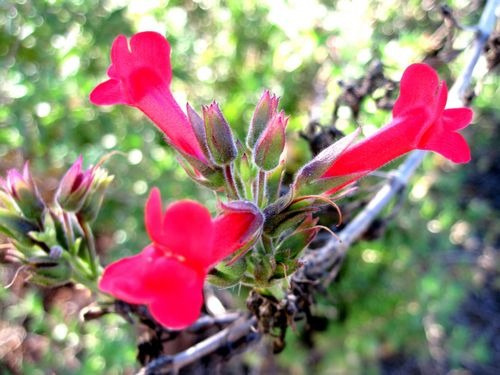
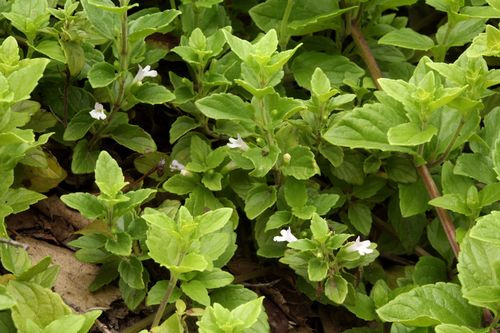
Yerba Buena
Micromeria douglasii
About: Native to the Pacific west, from maritime Alaska to California
Fun Fact: This plant can be used as a mint for tea!
Did you know?... San Francisco was previously named Yerba Buena by
Spanish settlers as this was an abundant plant in the area
Sticky Monkey Flower
Diplacus aurantiacus
About: Native southern Oregon, California, and Baja California!
Fun Fact: Do you think that its flowers resemble the faces of monkeys?
Did you know?... They were traditionally used for medicinal purposes by Native tribes throughout California! Try making some Sticky Monkey Flower Tea yourself!
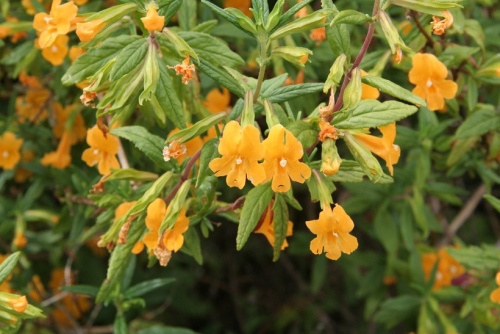
Come Visit!
Come visit Blooms at Bloom and reconnect with nature on Campus. Each native and drought-resistant planting brings a new experience to USC through its native origins, changing seasons, and even the new wildlife it will introduce!
Spending just 17 minutes a day is scientifically proven to increase your health and well-being; consider spending a few minutes a day at Blooms at Bloom or any other USC Native and Climate Adapted Planting Sites on campus!

Blooms at Bloom
USCDornsife